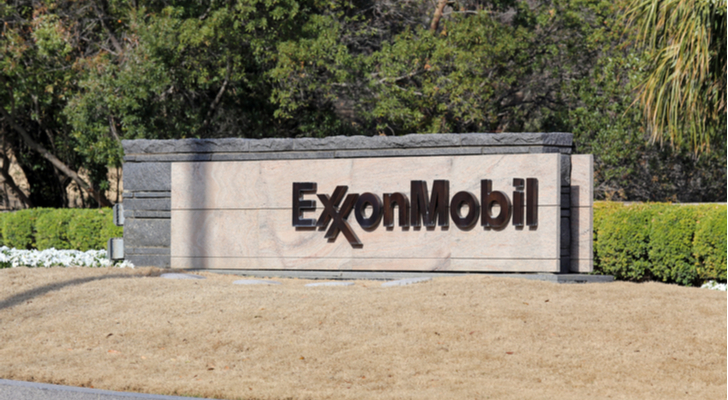What a difference a few years makes. Hop into the way-back machine and you’ll see a vastly different spending picture for Exxon Mobil (NYSE:XOM) and its integrated rivals. Massive capital expenditures (CAPEX) was seen as a must to survive. XOM stock, like many of its rivals, was facing a crunch of lower overall oil production. The only way to see it through was through enacting large-scale projects to move the needle.
That was all well and good until the oil price bottom fell out. Exxon was forced to scale back its CAPEX.
However, the lower overall oil production problem hasn’t gone away, which is why Exxon Mobil’s latest announcement is a huge win for investors.
Thanks to tax reform, XOM is, once again, able to start spending some serious dough on building out its production. For investors, this a huge deal and should help power the firm’s profits — and XOM stock — over the longer haul.
The Tax Windfall at Exxon
The Republican tax plan — and its lowering of overall corporate taxes — is having a dramatic effect already. So far, we’ve seen many firms raise their dividends or announce big-time buyback plans. M&A is also already on the rise. But Exxon seems to be doing what the tax cuts were designed for — it’s spending to grow.
In a blog post, new XOM CEO Darren Woods highlighted the global oil firm’s massive plans for expanding its empire. In the post, Woods announced that Exxon is planning on spending $50 billion in U.S. projects over the next five years. Moreover, XOM is also “actively evaluating” projects already in the early planning stages, as a result of changes to tax rates and the pro-oil regulatory environment.
In a separate announcement, an Exxon spokesman reported that, of that $50 billion, roughly $35 billion was for new and not previously announced projects. This include billions for downstream refining/petrochemical facilities, as well as expanding shale production. It also includes beefing out Exxon’s holdings in the hotbed Permian Basin.
All in all, this great news for XOM stock and its shareholders.
Since the oil crash, CAPEX at XOM has fallen by the wayside. Bloomberg reports
that, over the last two years, Exxon spent less than $6 billion per year on drilling for oil.
That’s a huge problem for XOM stock.
The issue is, as XOM’s legacy fields have continued to dry up, overall production at Exxon has started to dwindle. That’s a problem which causes a huge reduction in revenues and profits. And when prices are falling — as they did over the last two years — the effect is exacerbated.
Before the oil price crash, XOM was spending north of $10.5 billion per year on finding new sources of oil.
Exxon Getting Back to Normal
With the tax plan, XOM looks like it’s getting back to spending what it should be in order to keep growing. Several projects started during the last CAPEX splurge have started to materialize for the firm and actually drive production. The lull of the last two years sort of set it back a few million barrels. However, the new spending plan should put Exxon back on the pat of rising production and, ultimately, better profits.
For example, last January, Exxon made a few shrewd acreage buys in the Permian Basin that added about 3.4 billion barrels of oil equivalent to its reserves, while deepwater fields off the coast of Guyana have proven to be monster finds. Simply taking some of that $50 billion in CAPEX and sending it to these two regions would do wonders for production.
And with oil once again cresting $65 per barrel, any added production at this point would send Exxon’s profits and XOM stock surging upwards. While we won’t be seeing the $150 per barrel days, that $65 per barrel mark would do wonders. XOM’s upstream division returned to profitability around mid-2017 at much lower oil prices. So, any oil produced now is turning a very hefty profit for Exxon indeed.
Bottom Line on XOM Stock
Ultimately, for XOM stock shareholders, the CAPEX boost from Exxon is a big deal. It should get the firm back on the path of higher oil production and higher profits.
While details were scarce on exactly what/where the firm will spend its money, big bets on shale and deep water are almost assured. And, in that, XOM should find a foothold to regaining its former glory.
For investors, this is the best news they could have hoped for. Now, if only Exxon would use the tax plan to return more cash directly via dividends and an upsized buyback program, we’d be all set.
As of this writing, Aaron Levitt did not hold a position in any of the aforementioned securities.

